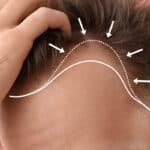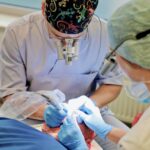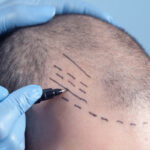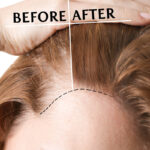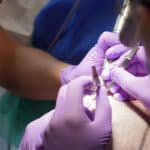Hair after a transplant requires special care in order to achieve the desired effect of visible thickening. A hair transplant is a very important decision that can significantly improve appearance and well-being. Thanks to modern, advanced techniques, the risk of side effects is practically reduced to zero. That is why more and more people decide to undergo this type of procedure. Below we present a comprehensive guide on how to care for hair after a transplant to ensure it remains healthy and beautiful.
What is a hair transplant?
Hair transplant is a procedure that involves moving healthy hair follicles from one area of the body (donor area) to an area affected by thinning or balding (recipient area). This procedure is primarily used to treat androgenetic alopecia, also known as male- or female-pattern hair loss. However, it is also applied in other cases of hair loss.
Doctors currently use several types of procedures. One of them is FUT (STRIP), Follicular Unit Transplantation, which involves removing strips of skin from the donor area (the back of the head), where hair is more resistant to balding. The strip is then divided into small units containing one or more follicles. Another technique is FUE, Follicular Unit Extraction, which involves extracting individual hair follicles directly from the donor area using a special tool.
Read more: What is the difference between STRIP and FUE hair transplant methods?
Regardless of the chosen technique, the hair transplant procedure follows a similar process. Initially, the patient meets with the doctor for a consultation to discuss goals, expectations, and treatment options. The quality of the patient’s hair in the donor area is also assessed. The specialist may order additional diagnostic tests. Once qualified, both the donor and recipient areas are carefully cleaned, and the patient is given anesthesia to minimize discomfort during the procedure.
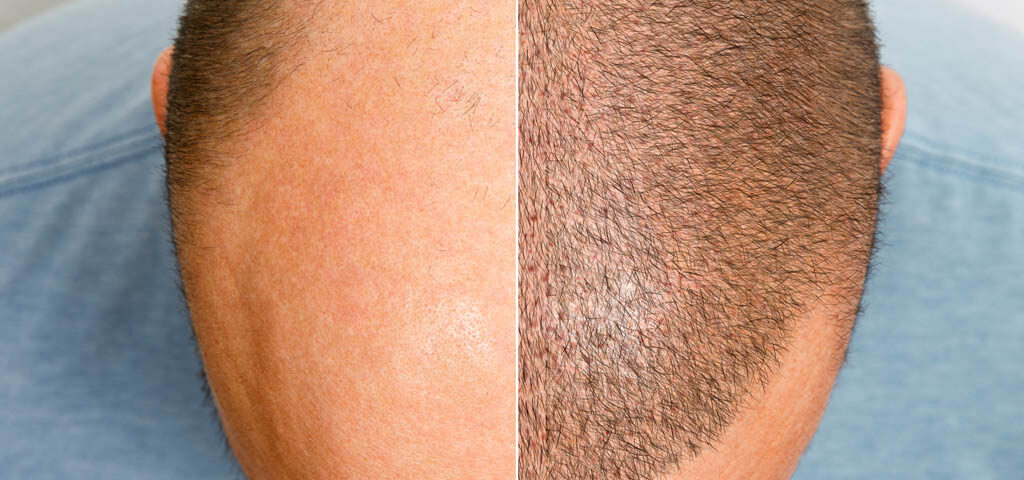
Depending on the chosen method, hair follicles are harvested, carefully prepared for transplantation, and divided into appropriate units. The surgeon makes tiny incisions in the recipient area where follicles are then precisely placed. This procedure requires great precision to ensure a natural look and proper hair density. After the procedure, the patient receives instructions regarding scalp care and activities to avoid, which could affect healing and the integration of transplanted follicles.
Read more: How to prepare for a hair transplant?
When do hair transplant results appear?
A hair transplant is a process that requires patience, as results are not immediate. Hair follicles need time to root and begin producing new hair. Immediately after the procedure, the recipient area may be swollen and red. These symptoms usually subside within a few days. Small scabs may also form where follicles were transplanted. It is also natural to experience hair shedding after a transplant. Many patients worry that hair falls out after a transplant, but this is a normal process called “shock loss” and should not be a concern. The follicles remain in the scalp and will start producing new hair.
3 months after a hair transplant, hair begins to grow from the transplanted follicles. Initially, it may be thin and delicate, but over time it becomes thicker. After about six months, most patients notice a significant improvement in hair density and length. Full results are usually visible after about a year – this is when you can clearly see hair regrowth after the transplant.
It is worth remembering that every body reacts differently to the procedure, which affects the pace of healing and hair growth. The transplant technique and the surgeon’s skills also influence the final outcome. Following the doctor’s recommendations regarding scalp care and avoiding factors that may damage follicles is crucial to the success of the therapy.
How to care for hair after a transplant?
During the first few days after the procedure, avoid touching the transplanted areas. The scalp is very sensitive during this period, and touching recipient sites may lead to infection or damage to follicles. The first washes should be done according to the doctor’s instructions – usually 48 hours after the procedure. Use a mild shampoo and gently massage the scalp without rubbing. It is also recommended to sleep on your back with your head elevated on a pillow during the first few nights. This helps avoid contact between the transplanted area and the pillow. In addition, patients should avoid physical activity that causes sweating. Sweat irritates the scalp and negatively affects the healing process.
How to wash hair after a transplant?
Washing hair after a transplant is a key element of care and requires special attention to ensure healthy growth of transplanted hair. First of all, the scalp should not be washed during the first two days after the procedure. This is the time when transplanted follicles are settling in the skin. After 48 hours, consult your doctor to make sure you can perform the first wash. Use a gentle, sulfate-free shampoo and lukewarm water.
The recommended washing technique involves gently wetting the scalp with light water, avoiding a direct stream on transplanted sites. Next, apply a small amount of shampoo to your hands and gently spread it on the scalp, avoiding rubbing the transplanted areas. Use fingertips to gently massage the scalp to remove impurities and blood residues. Rinse the shampoo with lukewarm water, allowing it to flow freely over the scalp without direct pressure. The next step is gently drying the scalp with a soft towel or gauze, without rubbing or pressing on the transplanted sites. Hair after a transplant should be washed every other day using this same technique.
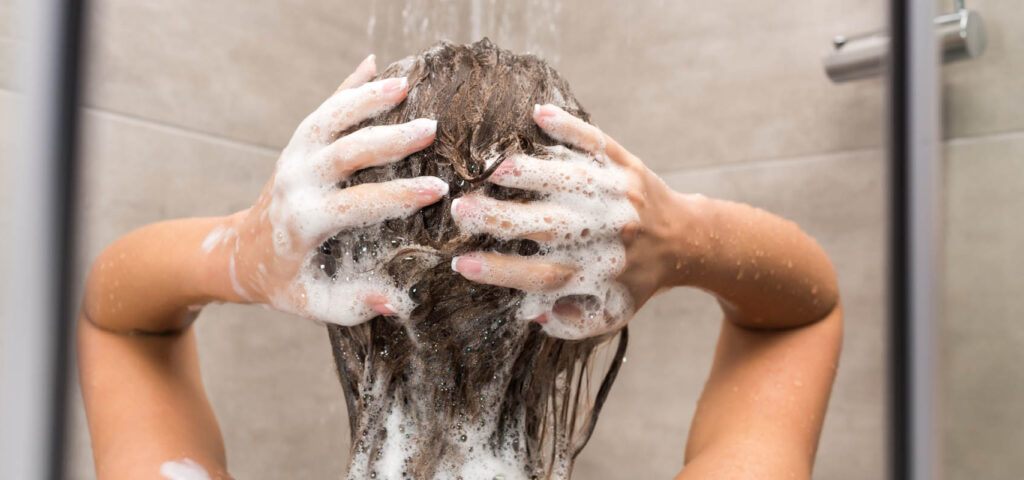
Sulfate-free shampoos, which are gentle on the scalp, are recommended. You can also use products specifically designed for hair after a transplant. However, it is important to remember that during the first weeks after the procedure, conditioners and styling products should not be used as they weigh down the hair and scalp.
Why is aftercare important following a hair transplant?
Proper scalp care plays a crucial role in the healthy growth of transplanted hair. The scalp is the environment where follicles develop and grow, so its condition directly affects hair health. The scalp has a natural pH that supports healthy hair growth. Too much or too little acidity can lead to scalp problems such as dandruff, itching, or dryness, which in turn affect hair growth. Maintaining the correct pH with mild shampoos and proper care can prevent these issues and create a favorable environment for new hair growth.
Just like the rest of the skin, the scalp requires proper hydration and nourishment. Lack of these can lead to dryness, which contributes to hair fragility and weakness. Regular use of moisturizing products or natural oils can help keep the scalp healthy and promote hair growth.
Additionally, impurities, sebum, dead skin cells, and product residues can accumulate on the scalp, disrupting the natural hair growth cycle. Regular cleansing with mild shampoos helps remove these impurities and maintain scalp health.
At OT.CO Clinic, we fully understand that hair after a transplant requires special care. That is why, in addition to the precision with which we perform every procedure, we also provide regular follow-ups for our patients. During these visits, we thoroughly explain all information related to scalp care.




